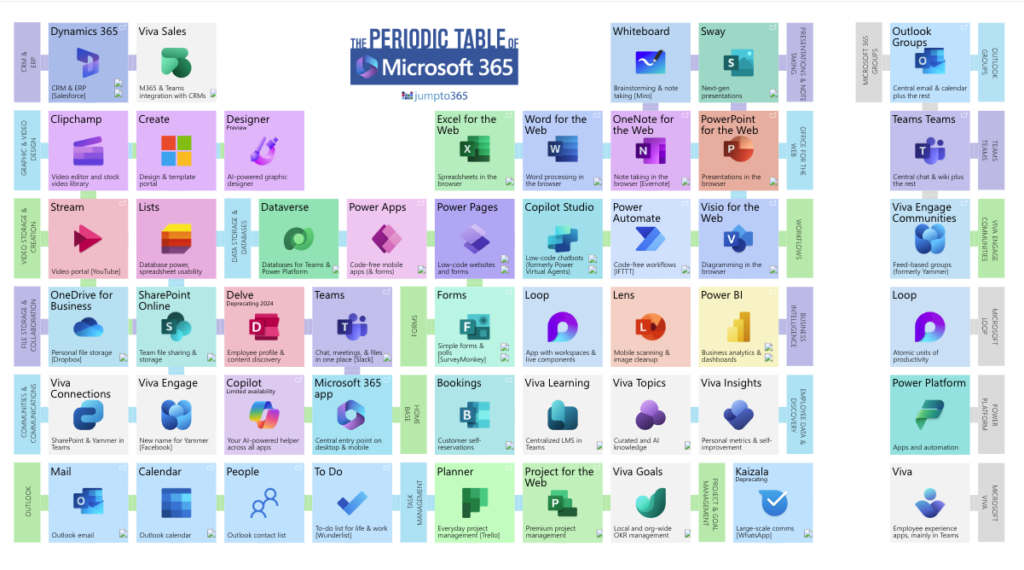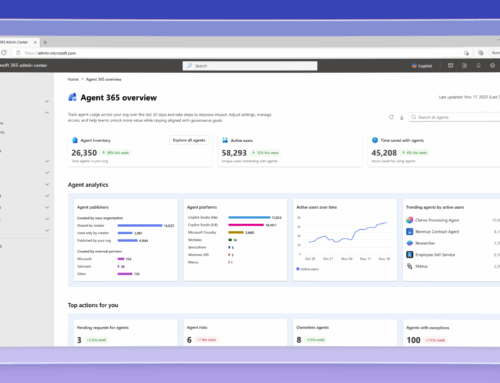As corporate intranet features evolve faster than ever (AI anyone??), staying ahead of the curve is more critical than ever for organizations. With over a decade of experience in implementing digital workspaces for companies of all sizes, I’ve seen firsthand how these innovations can reshape how we work, collaborate, and engage. The digital workspace revolution is upon us, and understanding the key trends in this space is vital for any organization looking to thrive in the modern workplace. In this blog, we’ll explore the current trends that are transforming digital workspaces and driving the future of work.
The Digital Workspace Landscape
Let’s paint a picture of the digital workspace landscape. Today’s digital workspace, powered by Microsoft 365, encompasses a wide range of platforms and tools designed to enhance productivity, collaboration, and employee engagement. It goes beyond traditional intranets, incorporating cloud-based applications like SharePoint, unified communications through Microsoft Teams, and powerful custom solutions built with Power Platform and Power Apps, all accessible via any device.
Trend 1: AI-Powered Personalization
Artificial intelligence (AI) is becoming increasingly, and quickly, integrated into digital workspaces. AI-driven personalization tailors the digital experience to individual users. For instance, with tools like Microsoft Copilot, an AI-powered intranet can suggest relevant content, streamline workflows, and automate routine tasks based on user behavior and preferences.
According to Deloitte’s latest Global Human Capital Trends report, 63% of organizations are already using AI and machine learning to support their employees in getting work done. This trend is only expected to grow, making AI a cornerstone of the digital workspace.
Trend 2: Employee Experience Analytics
Employee experience analytics is an emerging trend with organizations leveraging data to understand employee sentiment, engagement levels, and pain points within the digital workspace. By gaining these insights, organizations can drive targeted improvements, enhance the overall employee experience, and boost productivity and retention.
A 2023 survey by Gartner revealed that 80% of organizations plan to prioritize employee experience analytics in the coming year. This focus on data-driven decision-making helps organizations create more responsive and supportive work environments, ultimately leading to happier, more engaged employees.
Trend 3: Hybrid Work Environments
The COVID-19 pandemic accelerated the adoption of hybrid work environments, where employees split their time between the office and remote locations. According to a recent survey by McKinsey, 20-25% of the workforce could work remotely three to five days a week without sacrificing productivity.
This trend has significant implications for digital workspaces. Organizations must ensure that their digital environments seamlessly support both remote and in-office collaboration. Modern intranets need to be accessible from anywhere, and applications should facilitate real-time communication and collaboration.
Trend 4: Employee Wellbeing
Employee wellbeing has moved to the forefront of organizational priorities, especially in the wake of the pandemic. Digital workspaces play a crucial role in supporting employee mental and emotional health by providing access to resources, wellness programs, and communication channels.
A recent survey by Gartner found that 68% of organizations have introduced at least one new wellness benefit since the outbreak of COVID-19. Ensuring that digital workspaces include features that support wellbeing is no longer optional – it’s a necessity.
Trend 5: Integration of Collaboration Tools
Collaboration tools are central to the digital workspace. Within the Microsoft 365 ecosystem, the integration of tools like Microsoft Teams, SharePoint, and Power Platform into intranets has become commonplace. These tools foster real-time communication, seamless document sharing, and efficient project collaboration.
The adoption of Microsoft 365 collaboration tools has continued to soar. As of late 2023, Microsoft Teams reported over 280 million monthly active users, demonstrating the enduring demand for robust and integrated collaboration solutions.
Trend 6: Cloud-Based Everything
The shift to cloud-based solutions continues unabated. Cloud computing offers scalability, flexibility, and accessibility, making it an attractive choice for digital workspaces. The COVID-19 crisis further accelerated this shift as remote work demanded reliable cloud infrastructure. Additionally, with SharePoint Server reaching end of life in 2026, organizations are moving away from on-premises installations and embracing cloud-based solutions to ensure continued support and innovation.
According to Flexera’s 2023 State of the Cloud Report, 99% of enterprises use at least one public or private cloud, emphasizing the central role of cloud computing in modern digital workspaces.
Building your Digital Workspace
Understanding and leveraging these key digital workspace trends shapes how we work, collaborate, and engage with our employees, co-workers, and clients. By embracing these trends and leveraging the digital workspace ecosystem, organizations can create a thriving workplace that fosters productivity, innovation, and employee satisfaction.
If you’re ready to explore these trends more in-depth or want to explore how to maximize the value of your existing intranet, feel free to reach out. I’m here to help you navigate this journey and leverage my experience to create the best possible intranet for your organization.
Compass365, a Microsoft Gold Partner, delivers Microsoft 365 based solutions that help IT and Business leaders improve the way their organizations operate and how their employees work.










